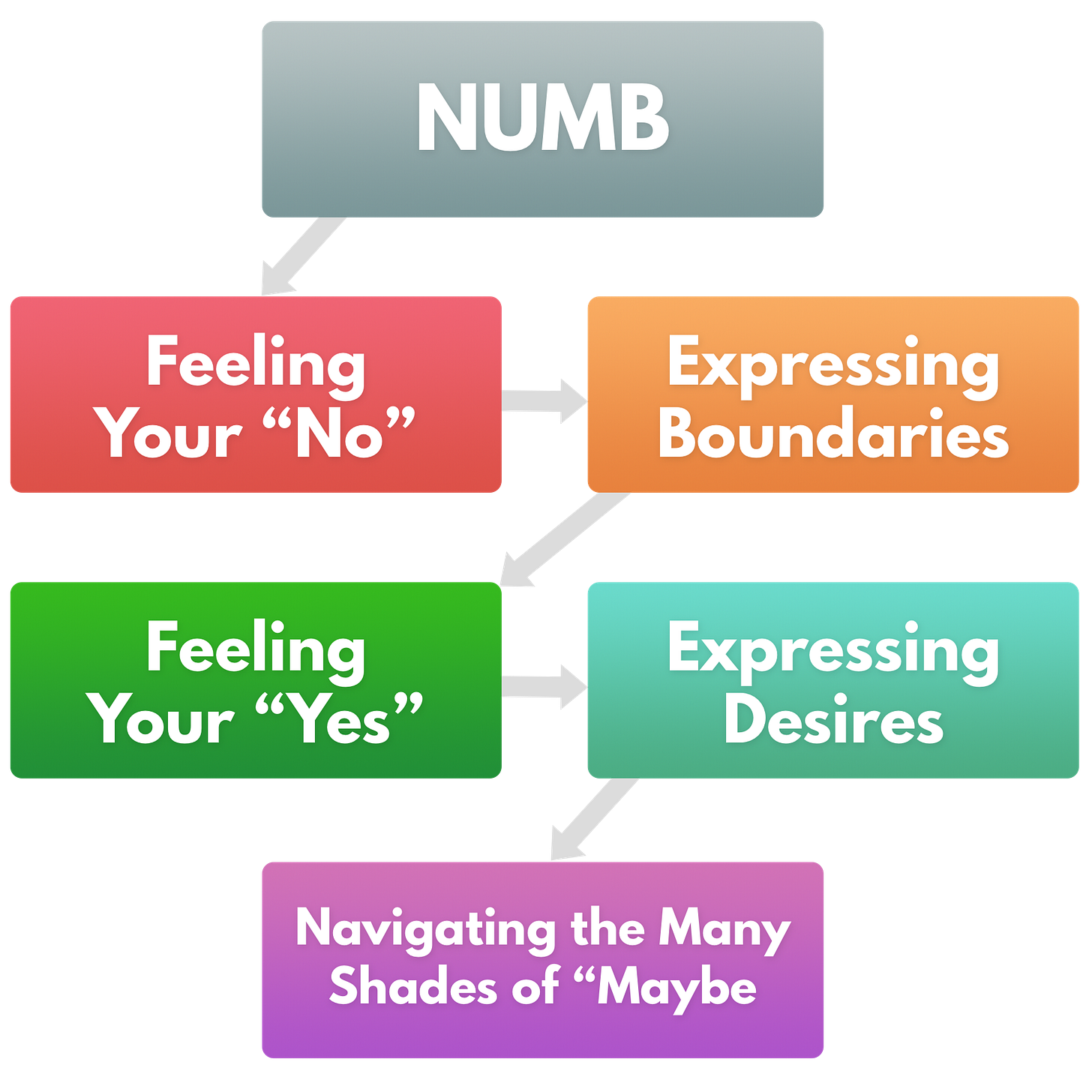How I Learned to Hear the Whisper Before the Scream
Paying attention to "7% uncomfortable" changes everything.
The music is soft, the coffee is good and there’s a pleasant breeze on this warm spring morning. I’m with a friend at one of my favorite cafes and we’re about an hour into our conversation when I feel it - a hint of tension in my body.
What I’m feeling isn’t anxiety or panic. It can’t even be called discomfort. It’s a far fainter signal than that - more like a feeling of being ever so slightly off balance.
If I had to put a number to it, I’d call it about 7% tense.
In other words: I’m 93% present and immersed in the conversation.
I ask a question, which nudges the conversational direction ever so slightly and moments later, the tension has dissolved.
From Numbness to Nuance
Later, on my drive back home, I have a chance to reflect on this interaction.
I smile to myself as I realize how big of a deal this small moment was. In fact, I can barely believe how far I’ve come!
That I even notice such subtle tension in the first place? Incredible! Unthinkable for me even just a few years ago.
I used to be so numb - I lived behind thick, emotional walls. Walls I’d built during childhood to survive in what felt like a cruel, uncaring world.
As an adult, I don’t need this kind of protection anymore, but dismantling the walls has been a slow, painstaking process.
All of this is why getting to a point where I notice 7% discomfort is a triumph to me.
And I could have never gotten here without learning the basics first:
Learning to Feel (and Say) “No”
If you met me 10 years ago, you’d probably say that I was stoic. Extremely stoic.
My face was a mask, never betraying any thought or emotion. I was calm, yes, but I was also unresponsive. In the middle of a pumping party or of a raging crisis, my expression and demeanor were always the same.
Except I was never invited to parties.
My response to any kind of conflict was generally to retreat, to avoid, to shut down.
All of this made for a decent survival mechanism but as you can imagine, it came with many drawbacks. For one, it led to tremendous suffering and conflict in my relationships.
A particularly painful breakup in my mid 20s was a wakeup call: I had to undo this behavioral pattern.
But how?
My first step was to learn to recognize my “no”.
Once I actually paid attention to it, I was relieved to find that I could detect a clear and strong “no” signal in my system. I’d feel it as physical tension - often in the form of a constricted throat.
Next, I needed to speak my “no” - I had to learn to set healthy boundaries. Here are some examples of what that looked like in practice:
Asking for alone time when I social exhaustion set in.
Saying no to projects or work coming my way.
Turning down an invitation or leaving an interaction when I felt like I’d had enough.
Letting go of the failing business I’d been hanging on to out of a sense of obligation.
Saying no to sex when I didn’t feel like it (this was huge for me because I was used to being in performance mode when it came to love making).
Okay, but where’s my “yes”?
Learning to say no was a big step for me. It felt liberating!
But after a while, I noticed that something was missing. I’d gotten really good at feeling and saying “no”. I was doing it all the time!
But I didn’t have a similar sensitivity for feeling my “yes”.
In other words: I know what I don’t want, but I’m not sure what I do want.
This was especially clear in my love life: I’d liberated myself from sex as a performance. I was no longer having sex out of a sense of obligation or to try and prove myself worthy…
…but I also just wasn’t having sex anymore, at all.
I felt like I want to have an active love life, but what exactly did I want that to look like? What do I desire?
I came up blank.
I started a themed journal, where I spent some time writing about my desires and my search for the inner “yes” every day (this is an Introspective Writing technique).
Gradually, I started feeling an initial sparks of desire. Eventually, I got a clear sense of “yes” and learned to follow that impulse as well.
This applies to everything outside the bedroom as well. For example, I had to learn to clearly feel: what don’t I want to work on? What kind of work do I truly desire to do?
The Many Shades of “Maybe”
At this point in my journey, I was no longer numbing myself, no longer hiding behind this stone mask by default. I was getting used to navigating the world by a felt sense of “strong yes” and “strong no”.
What I discovered next is that there are many shades of “maybe” between the two and navigating those requires ever more sensitivity and finesse.
Which brings us back to my experience of “7% no” with my friend at the cafe.
In the past, I would not have noticed such subtle tension. And not noticing it, I would not have been able to respond in any way.
What might have happened is that the conversation veered further and further into territory that I’m not interested in. I would have grown more disengaged and more tense. But I would have only noticed once I was at near “100% no”, if at all.
Think about the last time you were in an awkward conversation with someone, politely nodding and smiling while slowly dying on the inside.
In the past, I ended up in this kind of situation often.
Learning to navigate my “maybe” makes all the difference: I can now subtly nudge a conversation in a different direction, or find a way to gently exit, long before it becomes a total drag.
And now consider all the other areas of life where navigating the “maybe” is a game changer. Some that come to mind for me:
Calling quits on (or changing the direction of) a failing business instead of desperately trying to make it work for years.
Ending a relationship instead of desperately trying to make it work for years.
Saying yes to more invitations because I can trust myself to leave before I get super uncomfortable.
Sorting more effectively through the endless array of creative ideas my mind produces.
Start from Where You Are
Can you relate to my story? Do you you want to develop this sensitivity for your inner yes, no and maybe as well?
I think one thing you can learn from my experience is that there’s a sequence:
I couldn’t start listening for a “yes” before I started paying attention and appropriately responding to the “no” signals I was getting.
And only once I practiced listening and responding to the “clear no” and “clear yes” signals was I ready to start navigating the “maybe”.
Where are you at, right now?
Can you hear/feel your “no”?
Do you respond to it - e.g. by setting clear boundaries?
Can you hear/feel your “yes”?
Do you respond to it - e.g. by expressing your desires and asking for what you want?
Expressed as a flow chart, it would look something like this:
I’d love to know how this lands for you and how you currently relate to your inner compass. Let me know by leaving a comment!
If you’re like to explore a self-paced way to gain clarity about your desires, values and limiting beliefs - as well as the perfect tool set for inner growth, check out my Introspective Writing Course.



